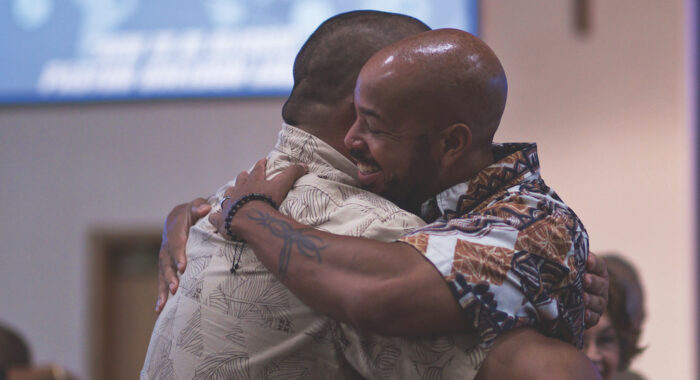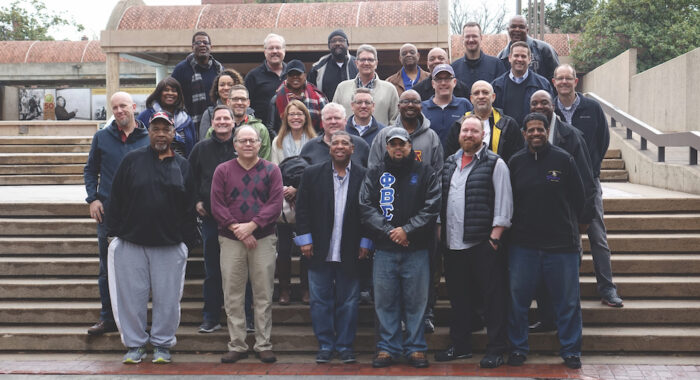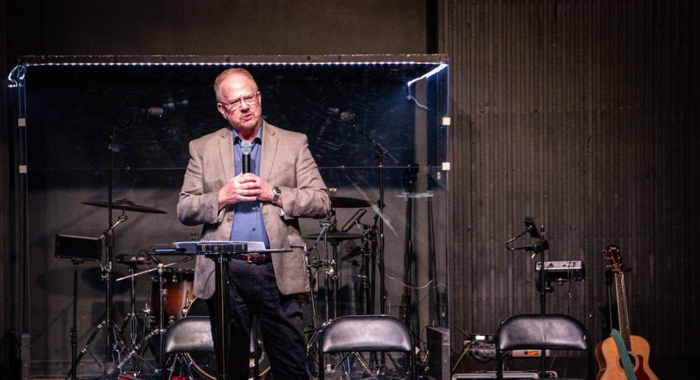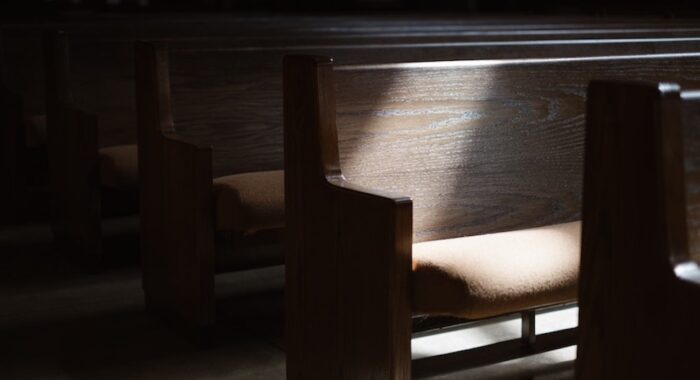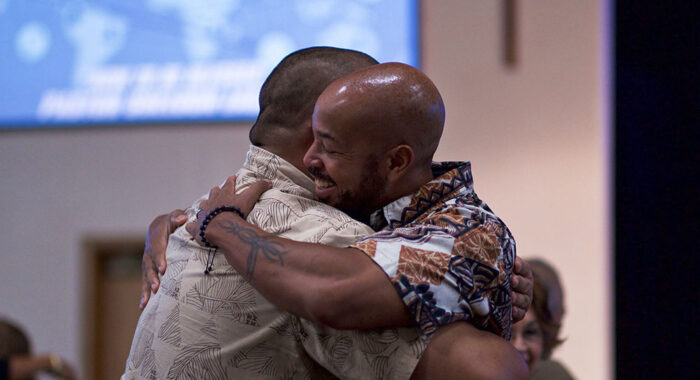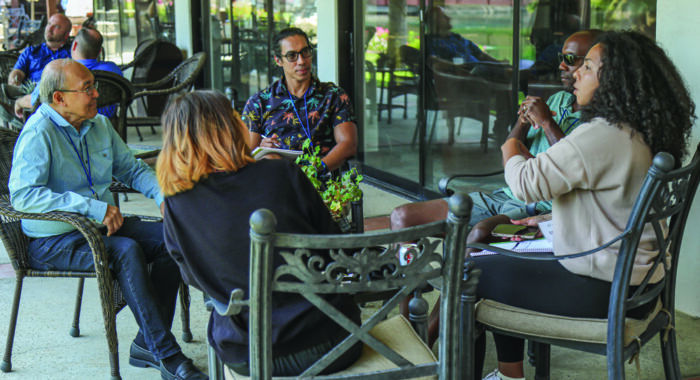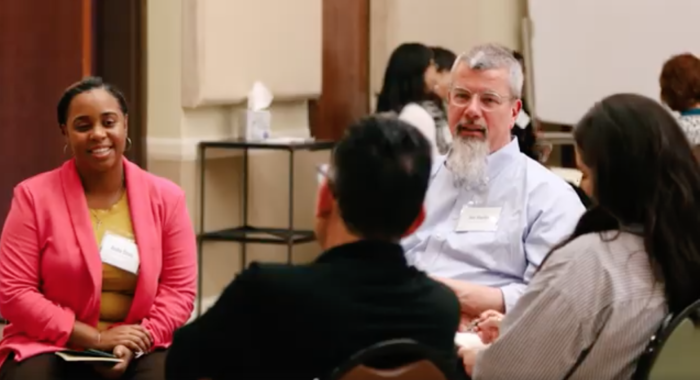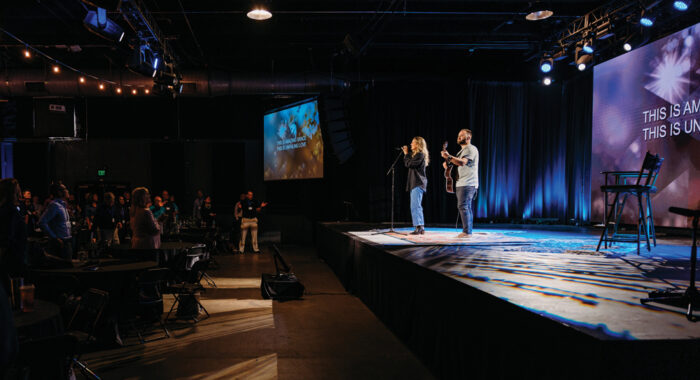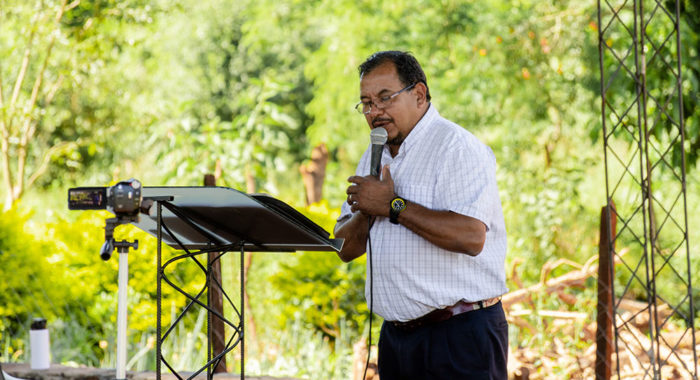Paul Jorgensen has served as lead teaching pastor at Cornerstone Church in Litchfield, Minnesota, since 2010. Prior to this he and his wife, Sharon, were church planters with WorldVenture in Austria. Jorgensen helped found the Grow Conference, a training event for pastors of rural churches.

Tell us the story of Cornerstone Church.
Cornerstone was founded in 1942. In 2000, the leadership decided to make Cornerstone a regional church. This involved re-defining who we were, establishing biblical and ministry foundations, and multiplying ministry through other sites and support for other churches.
We moved to a new site with a new building and name, focused on ministry to people in their 20s-40s. Cornerstone has grown in attendance from 200 to over 1,100 — in a town of 6,700 people. We are laying groundwork for our second campus, and support other churches through coaching and consulting.
How do other churches and pastors in neighboring communities relate to the success of Cornerstone?
Our relationships with others are cordial and collegial. We work together occasionally as part of community fundraisers or the local ministerial association. Cornerstone tries to reach as many people as we can, and encourage others to do the same — celebrating when they do.
A small church about 50 miles from us wanted to learn about Hispanic outreach (11 percent of Litchfield is Hispanic, and we have a Spanish-speaking ministry). That conversation grew into dreaming about the impact they could have in the three communities that make up their school district. From their input, we also identified things we could improve on in Cornerstone’s ministry. I hope more and more churches will choose to grow together.
How can rural churches grow in communities that aren’t growing? Or, is church growth the wrong question for rural churches?
The key is health. Healthy things grow. We focus on being spiritually and emotionally healthy, which includes helping people learn to share their faith and creating events — including worship services — that our people want to invite friends and family to.
Rural churches also need to think regionally. A pastor friend in Iowa told me, “People here will drive two hours to play, one hour to work, and 30 minutes to Menards’ [a hardware chain]. We assume they’ll drive 30 minutes to church.” Focusing on a county as opposed to a town is a good start.
Another thing is mission. Many small town churches have a wonderful legacy. But we can confuse strategy with mission, and we hang on to a ministry that was effective for a season but is so no longer. Leaders in rural churches need to celebrate and honor the past; then let what that mission looks like in the 21st century shape their strategy. In other words, be willing to change in order to stay the same.
Prior to becoming a rural pastor in the United States, you planted churches in Austria. How did your experience in Austria prepare you for ministry in rural America?
Both small town cultures place tremendous value on family, strong work ethic, harmony and appearances. Relationships are everything, and there is tremendous pride in community. Enthusiastically attending school events, festivals and parades is crucial.
One difference between planting churches in Austria and Minnesota was an expectation for pastors to function as chaplains. A friend who pastored in a Midwestern state was required to visit everyone in the hospital every day. With two hospitals that serviced that area — each 35 miles away in opposite directions — and an older congregation, you can imagine what that did to his time and bank account.
As a church planter, I was primarily an equipper, and not the pastor or chaplain of the church. We needed to equip the body to minister to each other. That lesson has been tremendously helpful.
Do rural churches have special challenges in recruiting excellent pastors, as compared to urban and suburban churches?
We can’t offer salaries that can be offered in the suburbs. The nearest mall is 27 miles away, and a good portion of the stores are empty. Many gifted people won’t give small towns a look. But, we’ve learned that our drawing radius is 22 miles, and 80,000 people live within that circle. 68,000 of them rarely attend church. That’s a mission field that is big enough for anyone.
You connect with rural church pastors in Minnesota and elsewhere. What are their biggest concerns or challenges?
Many are paid low salaries, and quite a few live in parsonages. They don’t have the opportunity to build equity, and can’t save much with their salary. Many in their churches are older on fixed incomes. Plus, if their largest givers are in agriculture, a hailstorm or a drought can change income in a hurry.
Self-image is another issue. Evangelical culture can be performance-oriented. Large and visible ministries are celebrated. This year we hosted a conference for small town and rural churches. I sent out a poll beforehand to see if there would be interest. One response I got was: “I don’t want to go to another conference that tells me what a lousy job I’m doing.”
What should denominations or other church networks be doing to support rural churches and pastors?
Affirm and celebrate them. Provide resources for pastoral care that are crafted uniquely for these churches and pastors. Encourage training institutions to focus on equipping pastors for rural ministry in the same way we focus on urban or cross-cultural ministry.
I love a line from the book “No Little People” by Francis Schaeffer: “ … in God’s sight there are no little people and no little places.” I can’t thank God enough that his place for me is a small place by human standards. But by God’s standards, it’s huge.
This article originally appeared in Evangelicals magazine.



 View All Articles
View All Articles 










